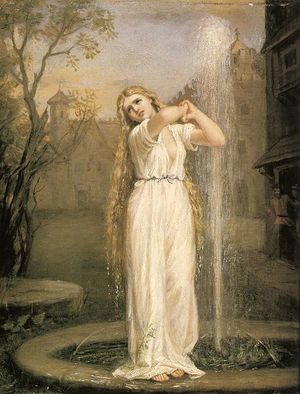John William Waterhouse
John William Waterhouse (Rome 1849 - London 1917) was an English painter during the Pre-Raphaelites era. Most famous for his paintings characters from myth and legend and his paintings of female characters (tragic or powerful femmes fatales). Waterhouse learned his trade from his father, who was also a painter.
In 1870 Waterhouse joins The Royal Academy Schools of London. Only two years later, in 1872, he exhibits his works at the Society of British Artists and in 1874 at The Royal Academy. After a period inspired by the classic subject matter (like Alma Tadema), from 1880, he initiates a creative stage based on purely literary topics. [1]
His latter painting reveals his interest in plein-air painting.
Although much is known about his painting life, next to nothing is know about his private life. In 1883 he married Esther Kenworthy.
Petite Gallery
See also
- Sir Lawrence Alma Tadema/Gallery
- Painting Schools
- Painting Masterpieces
- English Painting Masterpieces












